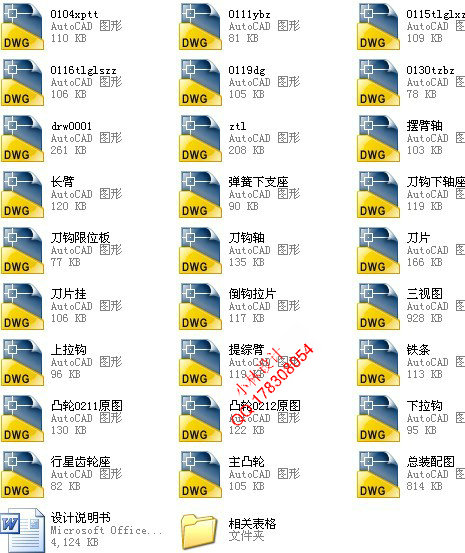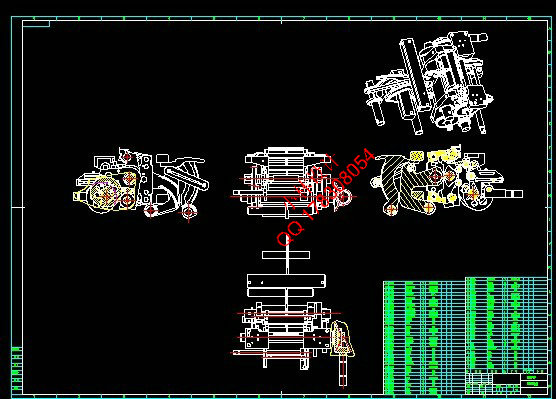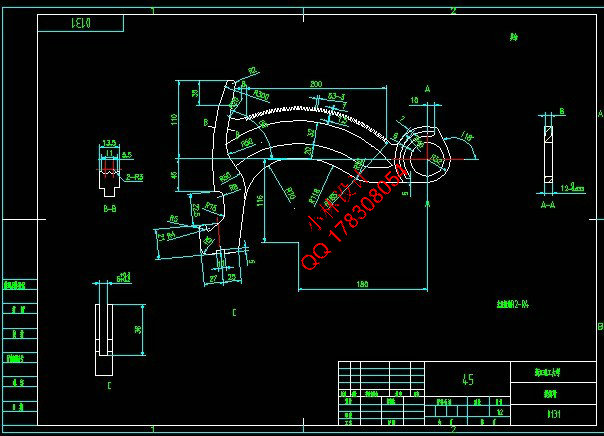 |
 |
|


|
设计名称 |
GD518多臂机主传动机构设计 |
 |
|
设计编号 |
z012 | |
|
设计软件 |
AutoCAD, Word | |
|
包含内容 |
见右侧图片 | |
|
说明字数 |
23000字 | |
|
图纸数量 |
见右侧图片 | |
|
推荐指数 |
较高 | |
|
价格: |
价格优惠中 | |
|
整理日期 |
2013.9.26 | |
|
整理人 |
小林 | |
|
购买流程 |
<查看如何购买本站设计> |
|
设计简介 |
设计描述:
文档包括: CAD版本图纸,共27张
摘要
自主开发运行稳定,质量上乘的喷水织机成了新的课题。 GD50型多臂机进行再设计和改造,设计制造GD518型多臂机。利用三维建模仿真来确定方案可行性。 通过Pro/E对于原凸轮进行仿真,得到所需的数据以及工作曲线,再利用MATLAB对于凸轮进行反求, 再通过Pro/E对于反求结果进行仿真和对于原数据的对比,从而实现提高凸轮精度,改善凸轮质量,
进而提升多臂机的转速、寿命以及运行稳定性。 于难以仅仅通过测绘得到的凸轮进行反求计算,以获得可用的凸轮数据。(3)所得结果利用三维运 动仿真来确定方案的可行性。(4)对于加工工序进行简单的分析,利用Pro/E进行数控加工仿真,生
产加工代码。
demand for water jet loom in the our country is improving year by year, so how to independent development stable running, good quality of the water jet loom has become a
new topic. type dobby, main way is to use Japan imported GD50 dobby design and renovation, design and manufacture of dobby GD518 type. Using three-dimensional modeling simulation to determine project feasibility. Through the Pro/E simulation for the CAM, to get the required data and the working curve, using the MATLAB for CAM reverse, in through the Pro/E for reverse result the simulation and comparison for the original data, to improve precision of the CAM and improve the quality of CAM, thus improve the speed, the life of
dobby and running stability. whole machine of surveying and mapping, combined with the existing data modeling. (2) is obtained by surveying and mapping for difficult to just reverse calculation of CAM, in order to obtain the available CAM data. (3) the results obtained by using three dimensional motion simulation to determine project feasibility. (4) for processing procedure to carry on the simple analysis, using Pro/E nc machining simulation, the
production and processing code. |
|
部分图纸 截图 |
  |
|
说明: |
如需了解本设计的具体详细信息请联系本站客服,说明看哪个设计(编号)哪个详细部分,我们将远程或截图给您观看. 机械毕业设计|论文 |

| [要求PR≥2,百度收录≥1000页;联系QQ:178308054] |
Powered by 小林机械资料商城 © 2013-2020 All Rights Reserved. 客服QQ:178308054
喜欢www.xiaolinbysj.com,请告诉你QQ上的5位好友,多谢您的支持! 皖ICP备2021006205号-1
